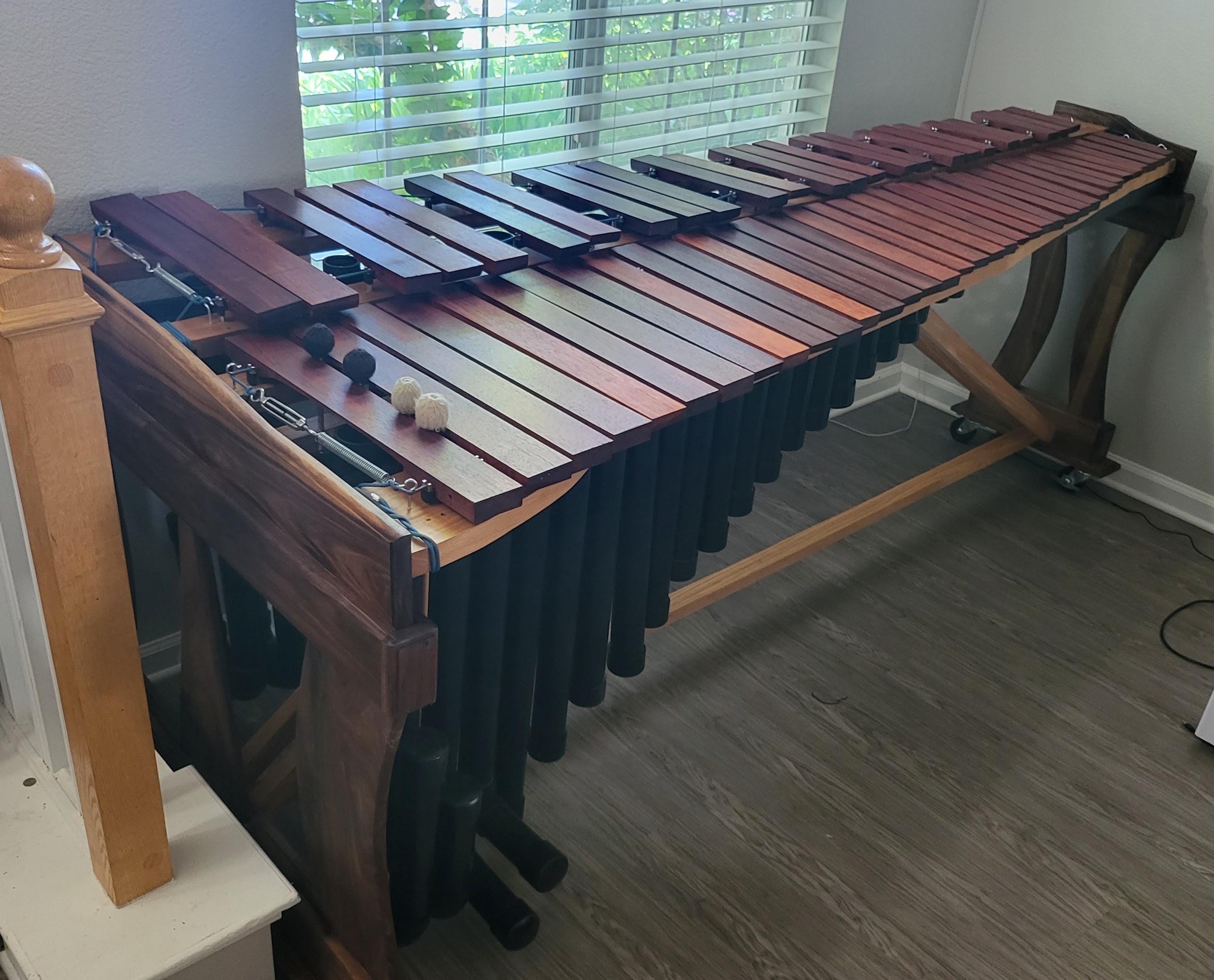Why am I not seeing anything? I want to see the amazing work!
Do It Yourself
Make it, Fix it, Renovate it, Rehabilitate it - as long as you’ve done some part of it yourself, share!
Especially for gardening related or specific do-it-yourself projects, see also the Nature and Gardening community. For more creative-minded projects, see also the Creative community.
This community's icon was made by Aaron Schneider, under the CC-BY-NC-SA 4.0 license.
Building your own musical instrument sounds like a daunting project at the beginning but one with very satisfying results. :)
Not knowing much about marimbas or woodworking, I’m super curious about the actual hand-tuning process! Is it carefully trimming the boards down? And how much do the tubes (?) at the bottom affect the tuning vs the wood pieces on top?
So each of the keys is cut to specific dimensions (I just stole these from an existing Marimba) where deeper keys are larger and higher keys shorter, then you cut an arch into the bottom of the key. The arch is where the real tuning comes from, the size of the key just gets you into the general neighborhood.
Each key has 1 primary tone and 2 overtones (actually way more, but these are the 3 that the human ear can actually pick up on), and each of the tones is tuned by specific regions of the arch, so if you trim material from the center for instance, it will affect the primary tone. I tuned my marimba so that the 2 overtones were the fourth harmonic and the tenth harmonic, which is standard for marimbas, and is what gives it it's unique deep sound.
The tubes are called resonators - they're sort of natural amplifiers, without them, the whole thing sounds like you're just smacking wooden blocks (which you are, to be fair), but with them you get a very powerful, room filling sound. Each one is "tuned" to the resonance of the key it sits under!
If you're interested in the specifics this is the blog I used to learn the process http://www.lafavre.us/tuning-marimba.htm
